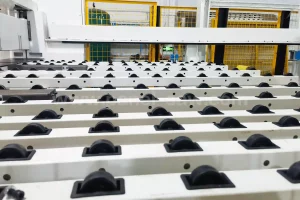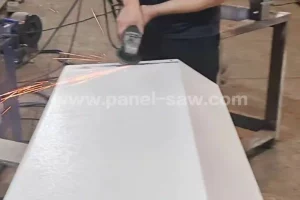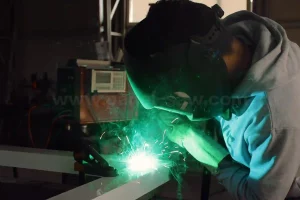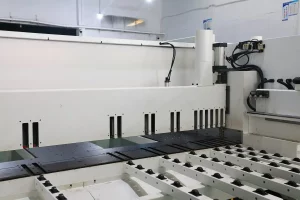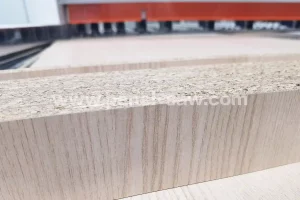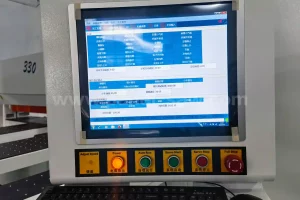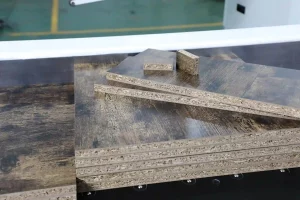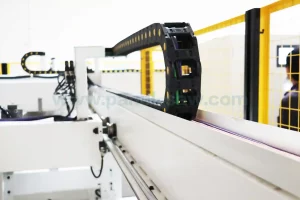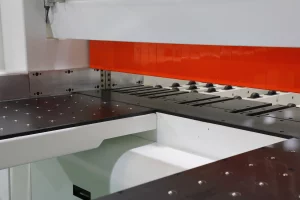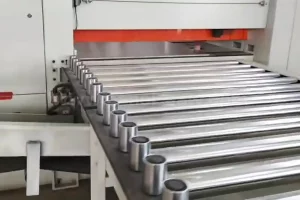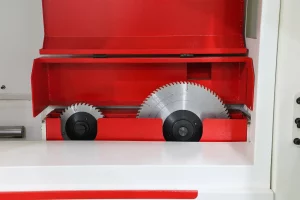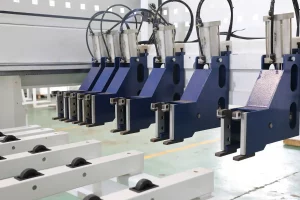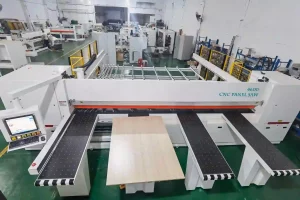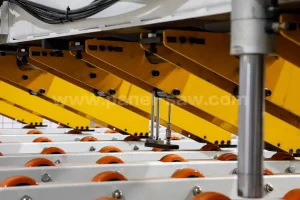
Mastering Woodworking Beam Saw Techniques for Precision and Efficiency
The woodworking beam saw, a cornerstone of woodworking, empowers skilled artisans to make precise and efficient cuts in thick lumber. Mastering beam saw techniques is vital to achieving accuracy and efficiency in your woodworking projects. Understanding the saw’s mechanics and implementing proper handling and cutting procedures will ensure optimal performance and safety.
Understanding the Mechanics of a Woodworking Beam Saw
A woodworking beam saw is an essential tool designed to handle large, thick pieces of lumber with precision. The saw’s blade, featuring teeth meticulously ground at specific angles, effortlessly tears through wood. The depth of each tooth determines the cutting capacity of the saw, making deeper tooth pitches necessary for thicker materials. High-quality blades with carbide teeth offer exceptional durability and precision, ensuring clean and accurate cuts every time.
Understanding the saw’s mechanics is the first step in mastering its use. The blade’s material composition, thickness, and tooth pitch all play crucial roles in its performance. High-quality blades made from carbide or bi-metal are known for their cutting efficiency and resistance to wear and tear, ensuring long-lasting performance.
The woodworking beam saw’s design incorporates a sturdy frame and powerful motor, providing the necessary force to cut through thick lumber. The alignment of the blade is crucial for maintaining straight and precise cuts, and regular calibration of the machine ensures consistent performance.
Conclusion on Beam Saw Mechanics
In conclusion, a solid understanding of the mechanics of a woodworking beam saw is essential for maximizing its performance. By choosing high-quality blades and understanding the importance of tooth pitch and blade composition, woodworkers can achieve precise and efficient cuts. Regular maintenance and calibration of the saw further enhance its functionality and longevity.
Preparing for a Cut with a Woodworking Beam Saw
Before wielding a woodworking beam saw, meticulous preparation is key. Secure the workpiece firmly to the saw’s fence or a sturdy workbench. Ensure that your stance is stable and comfortable, and maintain a firm grip on the handle. Always wear appropriate safety gear, including gloves and eye protection.
Proper preparation involves more than just securing the workpiece. It also includes ensuring that the saw is in good working condition. Regularly inspect the blade for signs of wear or damage, and ensure that it is securely attached to the handle. By taking these steps, you can ensure that your beam saw remains a valuable asset in your woodworking arsenal.
Selecting the right blade for the material is another critical step. For instance, cutting through hardwoods requires a blade with a higher tooth count for smooth finishes, while softer woods can be efficiently cut with fewer teeth.
Conclusion on Cut Preparation
In conclusion, thorough preparation is crucial for safe and efficient use of a woodworking beam saw. By securing the workpiece, maintaining a stable stance, and wearing appropriate safety gear, woodworkers can achieve precise and safe cuts. Proper blade selection and regular maintenance of the saw are also vital to ensure optimal performance and longevity of the tool.
Techniques for Making Precise Cuts with a Woodworking Beam Saw
When making the initial plunge cut with a woodworking beam saw, proceed cautiously and ensure that the blade enters the wood at a precise angle. Maintain steady and even pressure on the handle as you guide the saw through the material. The beam saw’s weight and momentum will do the rest. As you progress through the cut, keep the blade straight and ensure that the teeth maintain contact with the wood’s surface.
For wider cuts, consider using a guide rail. The rail provides additional support and ensures that the saw travels in a straight line. When making multiple passes to achieve the desired depth, ensure that each pass overlaps slightly to prevent chipping. These techniques not only enhance the quality of the cut but also improve the safety and efficiency of the process.
One advanced technique involves scoring the wood surface with a shallow cut before making a deeper pass. This helps in reducing splintering and ensures a cleaner edge. Additionally, understanding the grain direction and cutting with it can result in smoother finishes and reduce the effort needed.
Conclusion on Cutting Techniques
In conclusion, mastering cutting techniques with a woodworking beam saw is essential for achieving precise and efficient results. By using a guide rail for wider cuts and ensuring steady pressure and angle during the cut, woodworkers can enhance their cutting accuracy. Advanced techniques like scoring and understanding grain direction further improve the quality of the cuts and the overall efficiency of the woodworking process.
Safety Measures and Maintenance for a Woodworking Beam Saw
When handling large or heavy beams with a woodworking beam saw, prioritize safety. Use a beam clamp or assist from a colleague to secure the material firmly. Wear appropriate footwear and maintain a wide base to prevent slipping. Always cut away from your body and keep your fingers and hands away from the saw’s path.
Maintaining your beam saw is essential for optimal performance. Regularly inspect the blade for signs of wear or damage, ensuring that the teeth are properly aligned and that the blade is securely attached to the handle. By taking these steps, you can ensure that your beam saw remains a valuable asset in your woodworking arsenal.
Maintenance also includes cleaning the saw after each use to remove sawdust and debris, which can affect the machine’s performance. Lubricating moving parts and checking the motor for any issues are crucial steps in ensuring the saw operates smoothly.
Conclusion on Safety and Maintenance
In conclusion, adhering to safety measures and maintaining your woodworking beam saw is crucial for its longevity and performance. By following these guidelines, woodworkers can ensure a safe and efficient working environment. Regular maintenance and cleaning of the saw contribute significantly to its durability and reliability.
The woodworking beam saw is a vital tool for achieving precision and efficiency in woodworking projects. By understanding the mechanics of the saw, preparing properly for each cut, mastering cutting techniques, and adhering to safety measures and maintenance, woodworkers can maximize the potential of their beam saw. This comprehensive approach ensures that the woodworking beam saw remains an indispensable part of any woodworking toolkit.
FAQ
Q: What factors should I consider when choosing a woodworking beam saw?
A: Consider factors such as blade material, thickness, tooth pitch, and power source. High-quality blades made from carbide or bi-metal offer superior performance and durability. Additionally, evaluate the saw’s motor power and overall build quality.
Q: How can I ensure a precise cut with a woodworking beam saw?
A: Use a guide rail for wider cuts, maintain steady pressure and a precise angle during the cut, and ensure that the teeth maintain contact with the wood’s surface. Also, consider scoring the wood before deeper cuts and cutting along the grain direction.
Q: What safety precautions should I take when using a woodworking beam saw?
A: Wear appropriate safety gear, secure the workpiece firmly, maintain a stable stance, and always cut away from your body. Regularly inspect the saw for signs of wear or damage. Use clamps for large beams and work with a colleague if necessary.
Q: How do I maintain my woodworking beam saw?
A: Regularly inspect the blade for wear or damage, ensure that the teeth are properly aligned, and that the blade is securely attached to the handle. Proper maintenance includes cleaning the saw after use, lubricating moving parts, and checking the motor.
Q: What are some common applications of woodworking beam saws?
A: Woodworking beam saws are used in constructing buildings and bridges, manufacturing furniture, and producing various woodworking products. Their precision and efficiency make them suitable for a wide range of projects, including cabinetry and large-scale construction.
By understanding these aspects, woodworkers can fully leverage the capabilities of woodworking beam saws to enhance their projects and achieve exceptional results. The woodworking beam saw, with its ability to make precise and efficient cuts, remains an invaluable tool for any woodworking professional or enthusiast.



